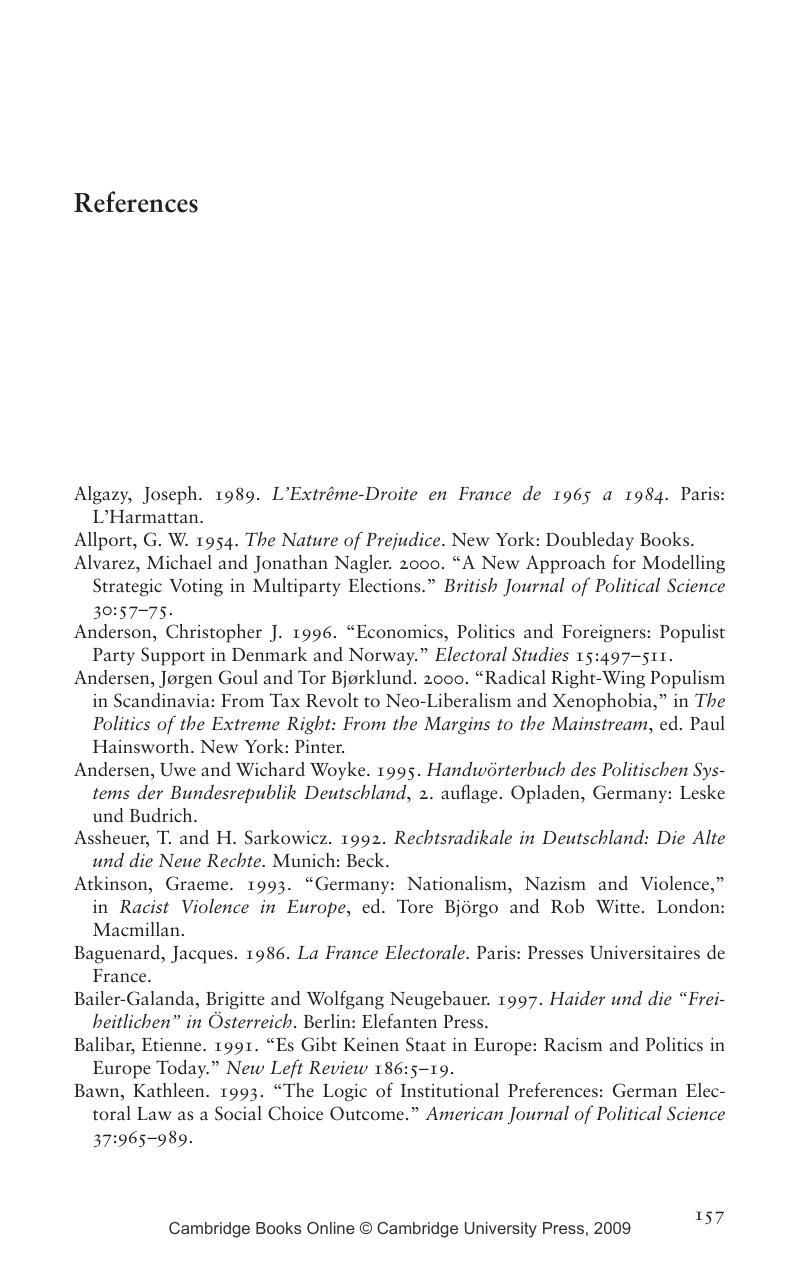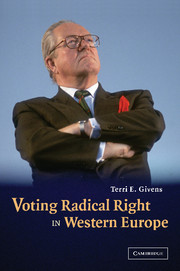Book contents
- Frontmatter
- Contents
- Acknowledgments
- Voting Radical Right in Western Europe
- 1 Introduction
- 2 The Radical Right
- 3 Who Votes for the Radical Right?
- 4 Immigration, Unemployment, and the Vote for the Radical Right
- 5 Coalitions and Strategic Voting: A Model
- 6 Coalitions and Strategic Voting: Analysis
- 7 Extending the Model: Denmark
- 8 Conclusion
- References
- Data Sources
- Party Documents
- Index
- References
References
Published online by Cambridge University Press: 23 July 2009
- Frontmatter
- Contents
- Acknowledgments
- Voting Radical Right in Western Europe
- 1 Introduction
- 2 The Radical Right
- 3 Who Votes for the Radical Right?
- 4 Immigration, Unemployment, and the Vote for the Radical Right
- 5 Coalitions and Strategic Voting: A Model
- 6 Coalitions and Strategic Voting: Analysis
- 7 Extending the Model: Denmark
- 8 Conclusion
- References
- Data Sources
- Party Documents
- Index
- References
Summary

- Type
- Chapter
- Information
- Voting Radical Right in Western Europe , pp. 157 - 168Publisher: Cambridge University PressPrint publication year: 2005



